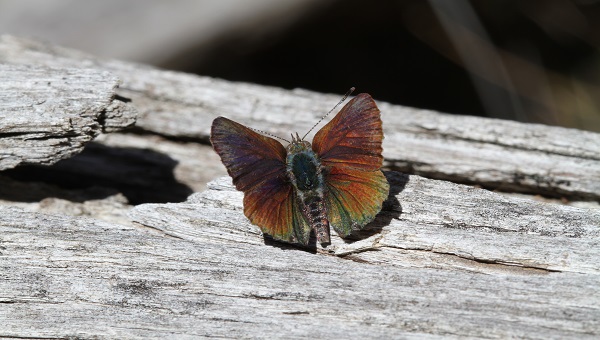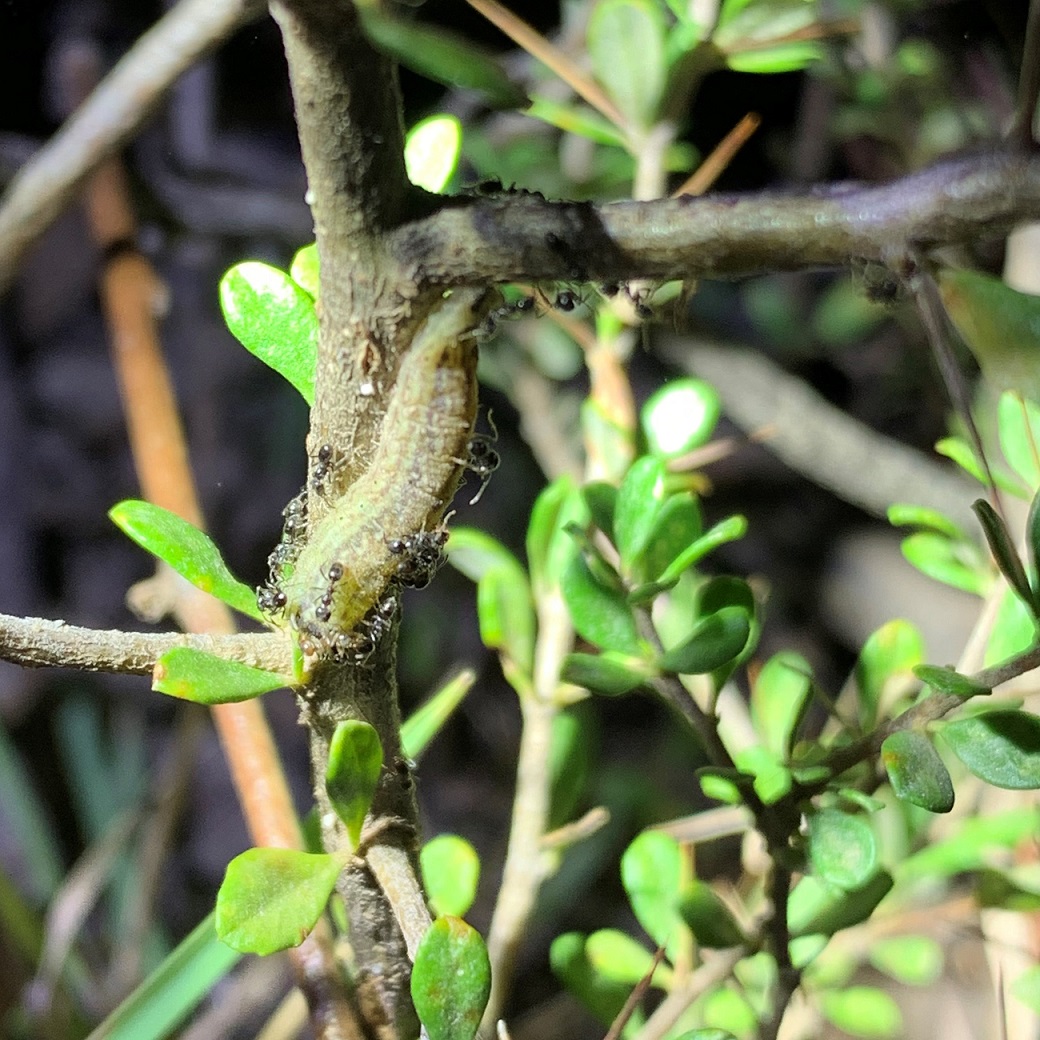Protecting the Purple copper butterfly
T he Purple copper butterfly (Paralucia spinifera), also known as the Bathurst copper butterfly, is a threatened species unique to our region.
he Purple copper butterfly (Paralucia spinifera), also known as the Bathurst copper butterfly, is a threatened species unique to our region.
One of Australia's rarest butterfly species, the Purple copper butterfly is a very small butterfly (wingspan of only 20-30 millimetres) which is only found in the south-east corner of the Central Tablelands region – between Lithgow, Bathurst and Oberon. Their habitat is restricted to areas above 900m where their host species, a specific sub-species of the native Blackthorn (Bursaria spinosa ssp lasiophylla), grows.
The butterflies are also dependant on the occurrence of a small ant, with which they have a symbiotic relationship – in return for a sugary excretion from the caterpillars, the ants protect and attend to the caterpillar – housing it safely in their nest during the day, and bringing it out over night to feed on the leaves of the blackthorn.
Image on the right shows the larvae being escorted at night by the ants
Butterflies can be observed in September and October on calm, sunny days, between late morning and early afternoon when conditions are warm enough for the butterflies to be active.
During their active time, butterflies will mate and lay eggs, out of which caterpillars hatch approximately two weeks later. Caterpillars can be observed feeding on the blackthorn leaves at night from November until January when they pupate in ant nests underground until the butterflies emerge again in September.
This video produced in 2018 provides information on the life cycle of the butterfly and talks about the work we're undertaking with community groups to protect and preserve this unique species.
The butterfly’s relationship with fire
Early trials of low intensity burning during the time when the butterfly is pupating underground have indicated that fire can have a beneficial effect on butterfly habitat, regenerating the blackthorn and providing lush and fresh leaves for caterpillars to feast on.
Fire during times that the caterpillars are actively feeding, however, can have a strong impact on populations, reducing the number of butterflies present and possibly even causing local extinctions if fires occur early in the season.
During the 2019/2020 bushfire season, several populations of the Purple copper butterfly in the Lithgow area were impacted by bushfire during the time when caterpillars were known to be active.
Thankfully, surveys undertaken in September and October 2020 confirmed that the butterflies managed to survive the fires at most of the impacted sites, and we are hopeful to find at least low numbers at the remaining sites during the next flying season.
A threat to the butterflies after fire is the strong regeneration of a lot of weed species that can compete with the native blackthorn and reduce the quality of the habitat after fire. Timely weed control is therefore critical to ensure the best possible recover after fire.
The ‘Friends with benefits’ project
As part of the Federal Government’s Bushfire Wildlife and Habitat Recovery Program, we were awarded funds to work together with our partners Lithgow Oberon Landcare Association, the NSW Saving our Species program, and Lithgow Council on reducing the weed regeneration in bushfire affected sites.
Together, we are managing the threat of weed invasion across 11 known Purple copper butterfly sites, and where the weeds have been suppressing the re-growth of native species, we will assist in the habitat’s recovery by planting native species, including native Blackthorn.
Partners supporting the recovery of the Purple copper butterfly
Threatened species recovery needs lots of hands working together, and the Purple copper butterfly is no different. We have joined forces with a range of partners including:
How can you help
We invite the community to assist us in our work to look after the Purple copper butterfly throughout the year.
From March to May, weed control and revegetation are our highest priority and we welcome community support during events we and our partners organise. Sign up to our newsletter to keep up to date and keep an eye on our events page.
During September and October, we encourage everyone to keep an eye out for these beautiful little creatures and let us know when you think you might have spotted them. If possible, see if you can take a photo of the butterflies so we can assist in identifying the species you have spotted.
You can record any sightings and observations as a part of the Counting Coppers Citizen Science project - click here to read more.
In December and January we carry out caterpillar monitoring at a selection of known sites and volunteers are always welcome. Get in touch with us if you are interested.
For more information on the species, check out the Saving our Species website.
Project officer:
Allan Wray, Senior Local Land Services Officer - 0447 278 308
